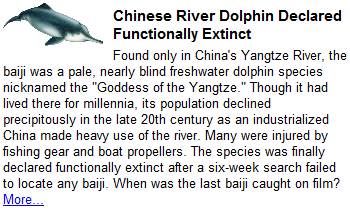Characteristics of "Web 2.0"
Earlier users of the phrase "Web 2.0" employed it as a synonym for "Semantic Web," and indeed, the two concepts complement each other. The combination of social-networking systems such as FOAF and XFN with the development of tag-based folksonomies, delivered through blogs and wikis, sets up a basis for a semantic web environment.[citation needed]
On September 30, 2005, Tim O'Reilly wrote a piece summarizing the subject. The mind-map pictured above (constructed by Markus Angermeier on November 11, 2005) sums up the memes of Web 2.0, with example-sites and services attached.
On September 30, 2005, Tim O'Reilly wrote a piece summarizing the subject. The mind-map pictured above (constructed by Markus Angermeier on November 11, 2005) sums up the memes of Web 2.0, with example-sites and services attached.
In the opening talk of the first Web 2.0 conference, Tim O'Reilly and John Battelle summarized key principles of Web 2.0 applications:
* the web as a platform
* data as the driving force
* network effects created by an architecture of participation
* innovation in assembly of systems and sites composed by pulling together features from distributed, independent developers (a kind of "open source" development)
* lightweight business models enabled by content and service syndication
* the end of the software adoption cycle ("the perpetual beta")
* software above the level of a single device, leveraging the power of The Long Tail.
* easy to pick up by early adopters
Tim O'Reilly gave examples of companies or products that embody these principles in his description of his "four plus one" levels in the hierarchy of Web 2.0-ness: [5]
* Level 3 applications, the most "Web 2.0", which could only exist on the Internet, deriving their power from the human connections and network effects Web 2.0 makes possible, and growing in effectiveness the more people use them. O'Reilly gives as examples: eBay, craigslist, Wikipedia, del.icio.us, Skype, dodgeball, and Adsense.
* Level 2 applications, which can operate offline but which gain advantages from going online. O'Reilly cited Flickr, which benefits from its shared photo-database and from its community-generated tag database.
* Level 1 applications, also available offline but which gain features online. O'Reilly pointed to Writely (since 10 October 2006: Google Docs & Spreadsheets, offering group-editing capability online) and iTunes (because of its music-store portion).
* Level 0 applications would work as well offline. O'Reilly gave the examples of MapQuest, Yahoo! Local, and Google Maps. Mapping applications using contributions from users to advantage can rank as level 2.
* non-web applications like email, instant-messaging clients and the telephone.
While interested parties continue to debate the definition of a Web 2.0 application, a Web 2.0 web-site may exhibit some basic characteristics. These might include:
* "Network as platform" — delivering (and allowing users to use) applications entirely through a browser.[6] See also Web operating system.
* Users owning the data on the site and exercising control over that data.[7][6]
* An architecture of participation and democracy that encourages users to add value to the application as they use it.[6][1] This is a sharp contrast to hierarchical access control in applications, in which users are categorized into roles with varying levels of functionality.
* A rich, interactive, user-friendly interface based on Ajax[6][1] or similar frameworks.
* Some social-networking aspects.[7][6]
* a Public good. "public goods" are characterized by two properties: jointness of supply and non-excludability (Hardin, 1982 [[1]]. The impossibility to exclude group members who didn’t contribute to the provision of goods from sharing its profits gives rise to the possibility that rational members will prefer to withhold their contribution of effort and "free ride" (see Free rider problem) on contribution of others (Marwell and Ames, 1979 [[2]]. (see web 2.0 as public good [[3]]
The concept of Web-as-participation-platform captures many of these characteristics. Bart Decrem, founder and former CEO of Flock calls Web 2.0 the "participatory Web"[8] and regards Web-as-information-source as Web 1.0.
Technology overview
The complex and evolving technology infrastructure of Web 2.0 includes server-software, content-syndication, messaging-protocols, standards-based browsers with plugins and extensions, and various client-applications. These differing but complementary approaches provide Web 2.0 with information-storage, creation, and dissemination capabilities that go beyond what the public formerly expected of web-sites.
A Web 2.0 website may typically feature a number of the following techniques:
* Rich Internet application techniques, optionally Ajax-based
* CSS
* Semantically valid XHTML markup and the use of Microformats
* Syndication and aggregation of data in RSS/Atom
* Clean and meaningful URLs
* Extensive use of folksonomies (in the form of tags or tagclouds, for example)
* Use of wiki software either completely or partially (where partial use may grow to become the complete platform for the site)
* Weblog publishing
* Mashups
* REST or XML Webservice APIs
taken from : wikipedia










No comments:
Post a Comment